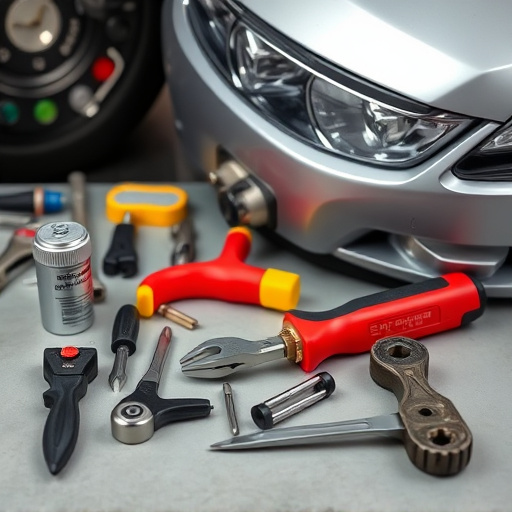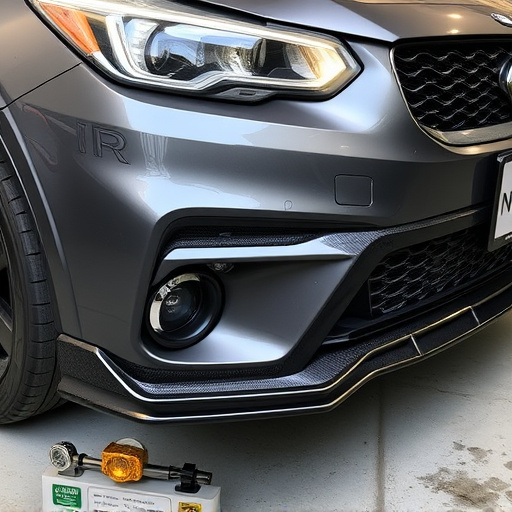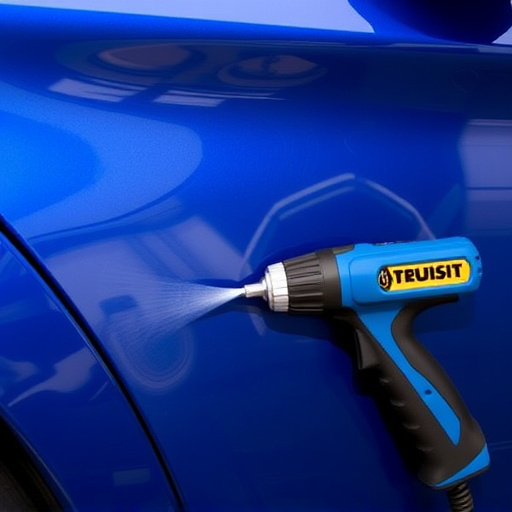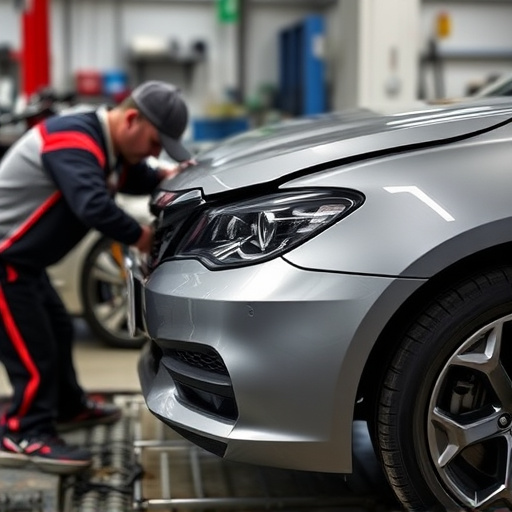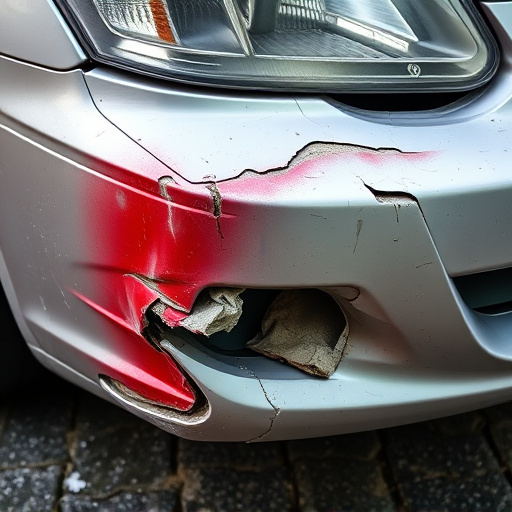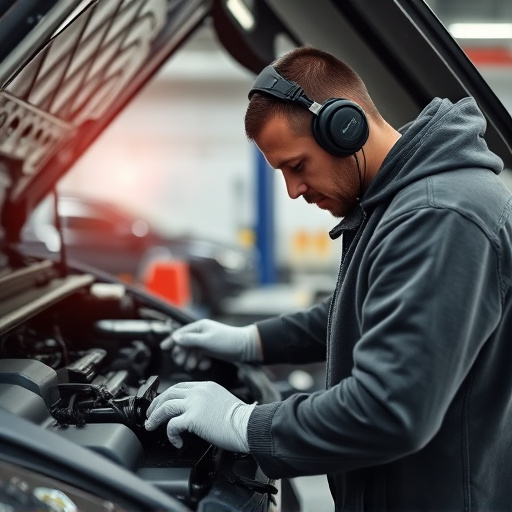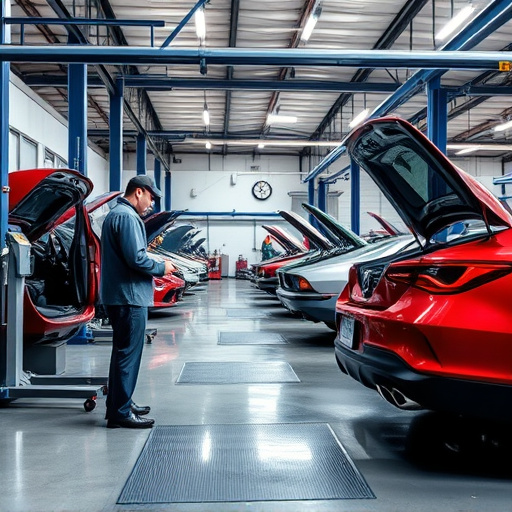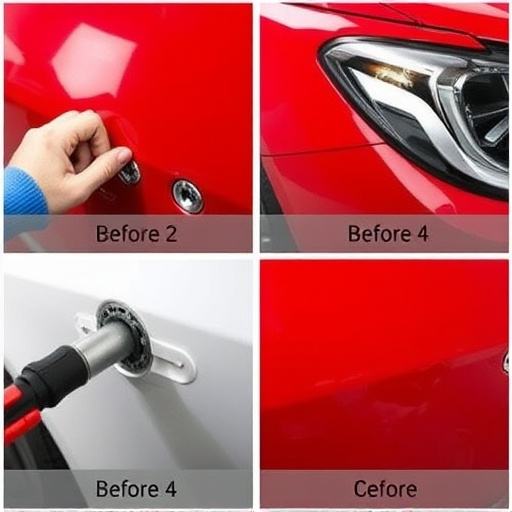Adopting environmentally safe repair practices extends vehicle lifespans, minimizes toxic emissions, conserves resources, and enhances performance, as seen in Mercedes Benz repair shops. These sustainable techniques, leveraging recycled materials and non-toxic paints, are reshaping the automotive industry with a focus on sustainability and quality, leading to greener, more durable cars.
“In an era where sustainability is at the forefront, environmentally safe repair practices are revolutionizing the automotive industry. This article explores how these green approaches contribute to the long-term durability of vehicles. From reducing environmental impact to enhancing overall performance, we delve into the key components of eco-friendly auto repairs and their profound effects.
We’ll uncover why adopting these sustainable techniques is not just an ethical choice but a strategic move towards a more durable future for cars.”
- The Impact of Environmentally Safe Repair Practices on Vehicle Longevity
- Key Components of Eco-Friendly Auto Repairs and Their Benefits
- Fostering Sustainability and Durability in the Automotive Industry Through Green Repair Techniques
The Impact of Environmentally Safe Repair Practices on Vehicle Longevity

Adopting environmentally safe repair practices has a profound impact on extending the lifespan of vehicles. Traditional automotive repair methods often rely on toxic chemicals and energy-intensive processes, contributing to environmental degradation and reducing overall vehicle durability. These practices can lead to faster corrosion, weakened structural integrity, and reduced performance over time.
On the other hand, environmentally safe repair techniques prioritize sustainability and safety without compromising quality. Using eco-friendly materials for dent removal and vehicle bodywork repairs minimizes toxic emissions and waste generation. Moreover, these methods often result in superior long-term outcomes, ensuring vehicles remain in optimal condition for extended periods. By choosing safe and sustainable practices, car owners can contribute to a greener environment while enjoying the benefits of enhanced vehicle longevity and performance.
Key Components of Eco-Friendly Auto Repairs and Their Benefits

Environmentally safe repair involves using eco-friendly materials and techniques that minimize the ecological impact of auto repairs. Key components include sustainable materials such as recycled metals, biodegradable plastics, and non-toxic paints. These materials not only reduce environmental pollution but also ensure safer working conditions for mechanics, who often face harmful chemicals in traditional vehicle maintenance.
The benefits are multifaceted: it conserves natural resources, reduces waste, and lowers greenhouse gas emissions. Moreover, environmentally safe repair practices can enhance the longevity of vehicles, as these methods prioritize quality over quick fixes. For instance, a car dent repair using eco-friendly techniques might not just fix the exterior but also ensure the structural integrity of the vehicle, leading to better overall performance and increased durability, especially when compared to non-sustainable vehicle body repair methods, such as those used in Mercedes Benz repair shops.
Fostering Sustainability and Durability in the Automotive Industry Through Green Repair Techniques
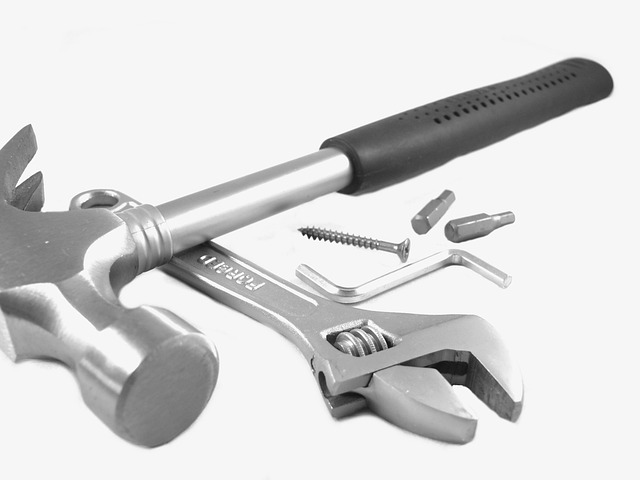
The automotive industry is undergoing a significant transformation as the global push for sustainability gains momentum. At the forefront of this change is the growing adoption of environmentally safe repair techniques, which are revolutionizing how we approach car damage repair and auto collision repair. These green repair methods not only minimize the environmental impact but also contribute to fostering durability and longevity in vehicles.
By focusing on sustainable practices, bumper repair professionals can reduce waste, conserve resources, and lower emissions associated with traditional repair processes. For instance, using eco-friendly materials and energy-efficient technologies during bumper repair or any other car damage repair significantly cuts down the carbon footprint of automotive workshops. Moreover, these techniques often result in stronger and more reliable repairs, ensuring vehicles not only look as good as new but also perform optimally, thereby promoting long-term durability.
Environmentally safe repair practices not only benefit our planet but also play a pivotal role in enhancing vehicle durability. By adopting eco-friendly techniques, the automotive industry can foster sustainability and ensure longer-lasting cars. These methods prioritize key components like recyclable materials, non-toxic solvents, and energy-efficient processes, reducing environmental impact while preserving performance. Ultimately, embracing environmentally safe repair supports a circular economy, where vehicles are repaired, reused, and recycled responsibly, ensuring a greener future for both the automotive sector and our planet.


